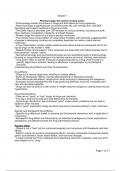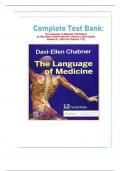Class notes
Chapter 1 Pharmacology: the science of drug action
- Course
- PSYC 450 (PSYC450)
- Institution
- Athabasca University (AU )
Chapter 1 of the document delves into the fundamental aspects of pharmacology, the science of drug action. It highlights the historical use of plants in medicine, referencing ancient Egyptian and Indian texts that detail remedies for various ailments. The chapter also emphasizes the ongoing relianc...
[Show more]




